Review: 2009 Pontiac G8 GXP
This site is not generally known as a fan of GM’s cars. And yet TTAC has lavished much love upon Pontiac’s thunder from down under: the G8 GT. The general line: if the 361-horsepower V8 version is magic, the 415-horsepower GXP should be an automotive miracle. Especially as the GXP offers the option of a manual gearbox. So, did Pontiac save its best car ever for last?
The Pontiac G8 GXP includes model-specific 19-inch wheels and a more aggressive front fascia. If you were expecting something more distinctive, you’re SOL. Just like the G8 GT most people will mistake it for, the GXP is a tasteful (aside from the hood scoops) homage to BMW’s E46 M3—that lacks the visual punch of Chrysler’s large SRT sedans. For all the talk that tastefully reserved pre-Bangle BMWs were da bomb, the Pontiac G8 proves that subtle styling doesn’t attract buyers to a new model.
The G8 GXP’s roomy (this is a LARGE sedan) cabin is virtually identical to that of other G8s. It’s dark and functional (i.e., dreadfully austere). Another homage to the way BMWs used to be? Like those traditional Bimmer interiors, the G8’s cabin says “only serious drivers need apply.” Well, there’s one exception: the seats. They’re comfortable, but as in other G8s the side bolsters could be more aggressive.
The 361-horsepower G8 GT doesn’t feel as quick as the specs suggest. Blame an overly muffled exhaust and an insufficiently responsive automatic transmission. The GXP provides solutions: another 54 horsepower, a louder (thankfully only when you push it) exhaust system and the option of a six-speed manual transmission. Of the three, the extra horses are probably least necessary, and probably aren’t worth the toll they take on fuel economy.
[Quick aside: the G8 GXP’s EPA ratings fall from 15/24 to 13/20, incurring a $1,700 gas guzzler tax. The problem isn’t so much the extra displacement as the elimination of cylinder deactivation. Not a good call with the automatic, but probably unavoidable with the manual. To further maximize the EPA ratings (how bad would they have been otherwise?), the manual shifter skips from first to fourth in relaxed driving. Diehard pistonheads may complain; in practice, it’s not an issue. If you’re not pushing the car, the engine has more than enough low-end torque to motivate the G9 GXP even in fourth gear. If you are pushing the car, the shifter won’t skip second and third.]
The Pontiac G8 GXP’s medium-throw shifter and low-effort clutch don’t annoy in traffic or frustrate in hard driving. You won’t mistake them for those in a Miata or S2000, but they’re far better than those in the Pontiac GTO and first-gen CTS-V. Again, pair a manual cog-swapper with the G8 GXP’s appropriately throaty 415-horsepower 6.2-liter V8 and you’ve got a large sedan that not only is quick, but feels quick. Need to scrub some speed? Big GXP-only Brembos make the task easy.
Get on the gas in a turn, and oversteer happens. No surprise, given the pounds-feet in play. And yet the G8 GXP won’t be coming soon to a ditch near you. Especially with the direct linkage provided by the manual transmission, the G8 GXP oversteers in such a predictable linear fashion that right-foot steering is the default option.
Push too hard despite clear feedback through the seat of your pants? A touch of countersteer restores your intended line. (The standard stability control doesn’t kill the fun until it stops being fun.) Though the steering isn’t quite as communicative as the chassis, the G8 GXP’s handling could hardly be more intuitive. Step up the tempo, and the G8 shrinks around you. It feels much more tossable than a 196-inch-long, two-ton sedan has any right to. Even some of the world’s thickest A-pillars barely dent driver confidence. Simply put: you won’t find a large sedan that’s more fun to drive.
The GXP’s suspension tuning is just a scosh firmer than the GT’s. Those seeking a hardcore feel might be disappointed. Those seeking a livable ride won’t.
And so, while the G8 GXP could make a stronger styling statement, it’s the best all-around driver’s car the brand has ever offered. Still, there are two big problems. First, the G8 GT is nearly as much fun to drive, while getting substantially better gas mileage and costing over $6K less. Clutch-avoiders should buy the GT, then spend a fraction of the savings on a sweet-sounding aftermarket exhaust.
But if you want a large sedan with a manual transmission, then the G8 GXP is not only the best game in town, it’s the only game in town. Which brings us to the second big problem: this game is leaving town. With the Pontiac brand headed for the dustbin, all G8s will soon be gone. Get one while you can.
Michael Karesh lives in West Bloomfield, Michigan, with his wife and three children. In 2003 he received a Ph.D. from the University of Chicago. While in Chicago he worked at the National Opinion Research Center, a leader in the field of survey research. For his doctoral thesis, he spent a year-and-a-half inside an automaker studying how and how well it understood consumers when developing new products. While pursuing the degree he taught consumer behavior and product development at Oakland University. Since 1999, he has contributed auto reviews to Epinions, where he is currently one of two people in charge of the autos section. Since earning the degree he has continued to care for his children (school, gymnastics, tae-kwan-do...) and write reviews for Epinions and, more recently, The Truth About Cars while developing TrueDelta, a vehicle reliability and price comparison site.
More by Michael Karesh
Latest Car Reviews
Read moreLatest Product Reviews
Read moreRecent Comments
- Lorenzo I just noticed the 1954 Ford Customline V8 has the same exterior dimensions, but better legroom, shoulder room, hip room, a V8 engine, and a trunk lid. It sold, with Fordomatic, for $21,500, inflation adjusted.
- Lorenzo They won't be sold just in Beverly Hills - there's a Nieman-Marcus in nearly every big city. When they're finally junked, the transfer case will be first to be salvaged, since it'll be unused.
- Ltcmgm78 Just what we need to do: add more EVs that require a charging station! We own a Volt. We charge at home. We bought the Volt off-lease. We're retired and can do all our daily errands without burning any gasoline. For us this works, but we no longer have a work commute.
- Michael S6 Given the choice between the Hornet R/T and the Alfa, I'd pick an Uber.
- Michael S6 Nissan seems to be doing well at the low end of the market with their small cars and cuv. Competitiveness evaporates as you move up to larger size cars and suvs.




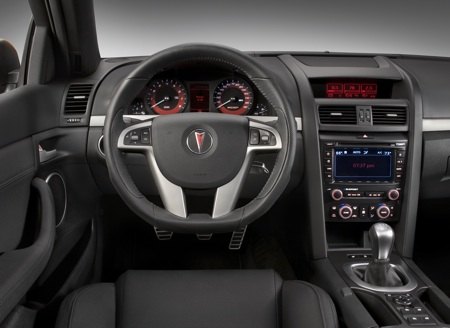



















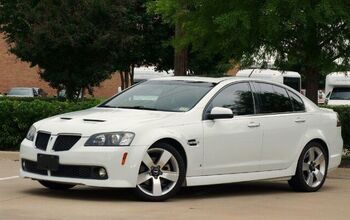
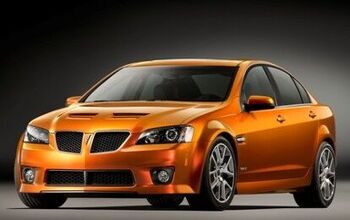
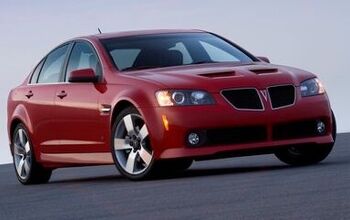
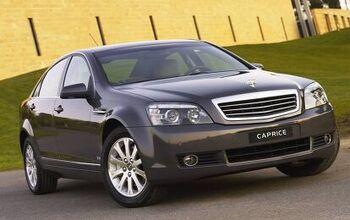










Comments
Join the conversation
PowerPro01 - there's a lot of factors. Depreciation. Uncertainty - over GM, over dealer service, over the durability of the car, etc. And the material quality and content, while adequate at about a US-made-Camry level and maybe a tick better than its most direct competitor (the 300C and Charger), isn't a big selling point for those used to German or upscale Japanese (just about everyone who looks at a G8 comes away and says "Nice car. Really nice car. Can't they do better on the parking brake handle?" And then there's the "Where's the nav?" folks...) I've been screaming to the high heavens about Aussie hardware for about a decade, I've had occasion to drive some nice examples in their natural habitat. They just do great, useful vehicles. Tons of interior room, more than any American car (even FWD ones) of similar size. Outstanding real-world chassis. The 5.4L Falcon GT I rented a couple years back had the best eight-hour seats of any car I've ever driven - super-comfy but still aggressively bolstered.